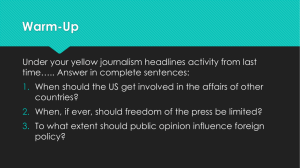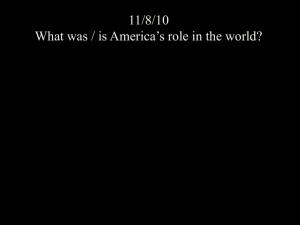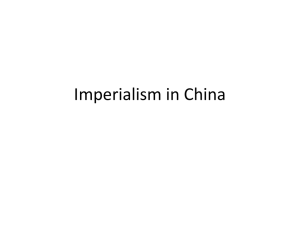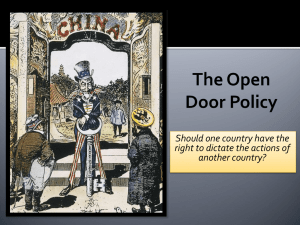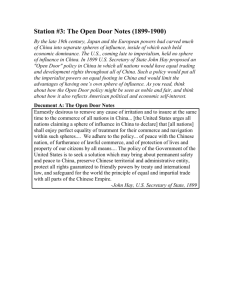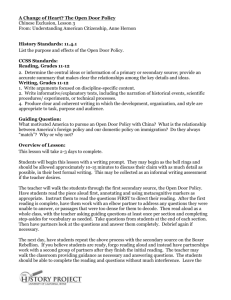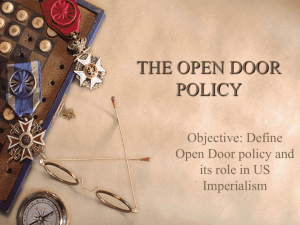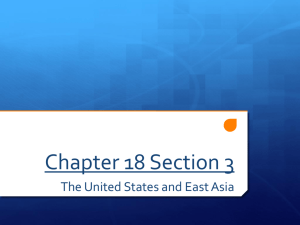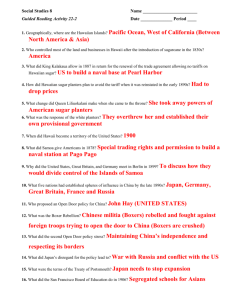File - US History Rangeview
advertisement
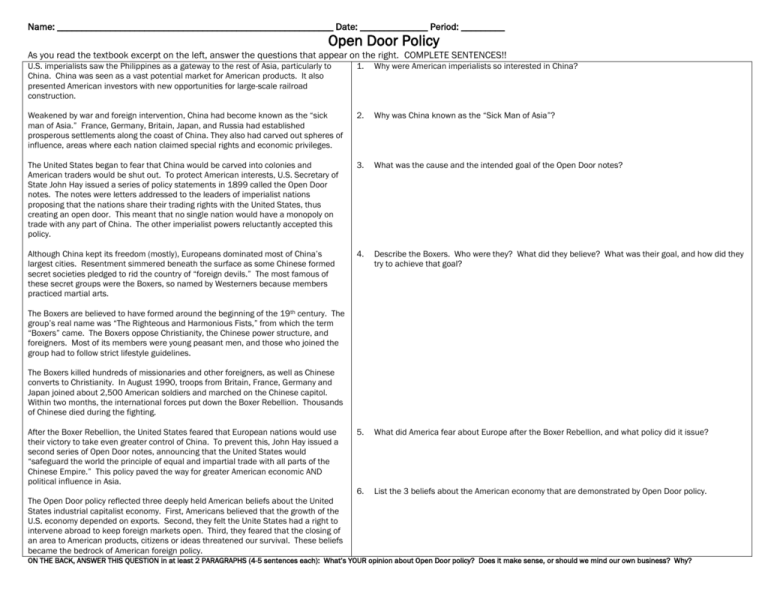
Name: _________________________________________________________ Date: ______________ Period: _________ Open Door Policy As you read the textbook excerpt on the left, answer the questions that appear on the right. COMPLETE SENTENCES!! U.S. imperialists saw the Philippines as a gateway to the rest of Asia, particularly to China. China was seen as a vast potential market for American products. It also presented American investors with new opportunities for large-scale railroad construction. 1. Why were American imperialists so interested in China? Weakened by war and foreign intervention, China had become known as the “sick man of Asia.” France, Germany, Britain, Japan, and Russia had established prosperous settlements along the coast of China. They also had carved out spheres of influence, areas where each nation claimed special rights and economic privileges. 2. Why was China known as the “Sick Man of Asia”? The United States began to fear that China would be carved into colonies and American traders would be shut out. To protect American interests, U.S. Secretary of State John Hay issued a series of policy statements in 1899 called the Open Door notes. The notes were letters addressed to the leaders of imperialist nations proposing that the nations share their trading rights with the United States, thus creating an open door. This meant that no single nation would have a monopoly on trade with any part of China. The other imperialist powers reluctantly accepted this policy. 3. What was the cause and the intended goal of the Open Door notes? Although China kept its freedom (mostly), Europeans dominated most of China’s largest cities. Resentment simmered beneath the surface as some Chinese formed secret societies pledged to rid the country of “foreign devils.” The most famous of these secret groups were the Boxers, so named by Westerners because members practiced martial arts. 4. Describe the Boxers. Who were they? What did they believe? What was their goal, and how did they try to achieve that goal? 5. What did America fear about Europe after the Boxer Rebellion, and what policy did it issue? 6. List the 3 beliefs about the American economy that are demonstrated by Open Door policy. The Boxers are believed to have formed around the beginning of the 19th century. The group’s real name was “The Righteous and Harmonious Fists,” from which the term “Boxers” came. The Boxers oppose Christianity, the Chinese power structure, and foreigners. Most of its members were young peasant men, and those who joined the group had to follow strict lifestyle guidelines. The Boxers killed hundreds of missionaries and other foreigners, as well as Chinese converts to Christianity. In August 1990, troops from Britain, France, Germany and Japan joined about 2,500 American soldiers and marched on the Chinese capitol. Within two months, the international forces put down the Boxer Rebellion. Thousands of Chinese died during the fighting. After the Boxer Rebellion, the United States feared that European nations would use their victory to take even greater control of China. To prevent this, John Hay issued a second series of Open Door notes, announcing that the United States would “safeguard the world the principle of equal and impartial trade with all parts of the Chinese Empire.” This policy paved the way for greater American economic AND political influence in Asia. The Open Door policy reflected three deeply held American beliefs about the United States industrial capitalist economy. First, Americans believed that the growth of the U.S. economy depended on exports. Second, they felt the Unite States had a right to intervene abroad to keep foreign markets open. Third, they feared that the closing of an area to American products, citizens or ideas threatened our survival. These beliefs became the bedrock of American foreign policy. ON THE BACK, ANSWER THIS QUESTION in at least 2 PARAGRAPHS (4-5 sentences each): What’s YOUR opinion about Open Door policy? Does it make sense, or should we mind our own business? Why?

